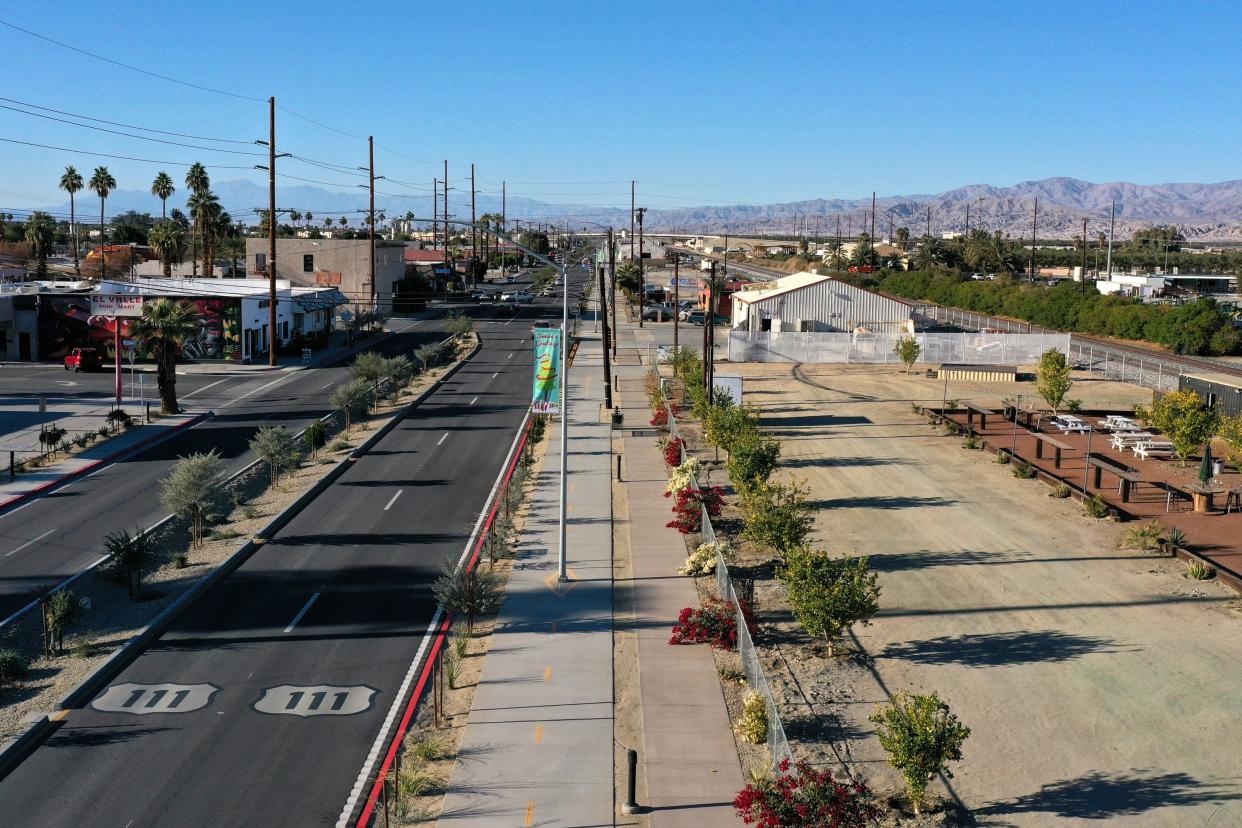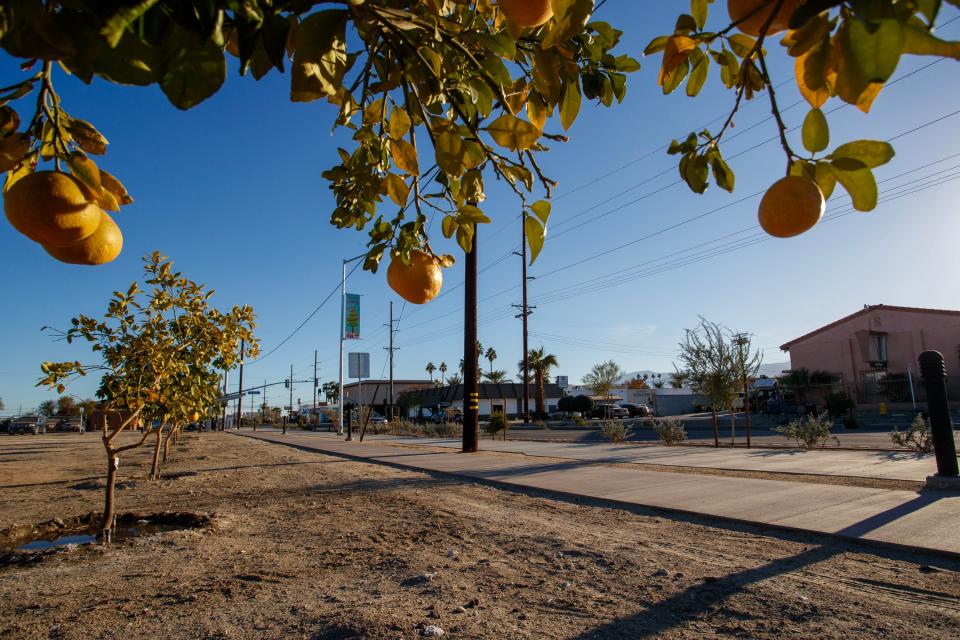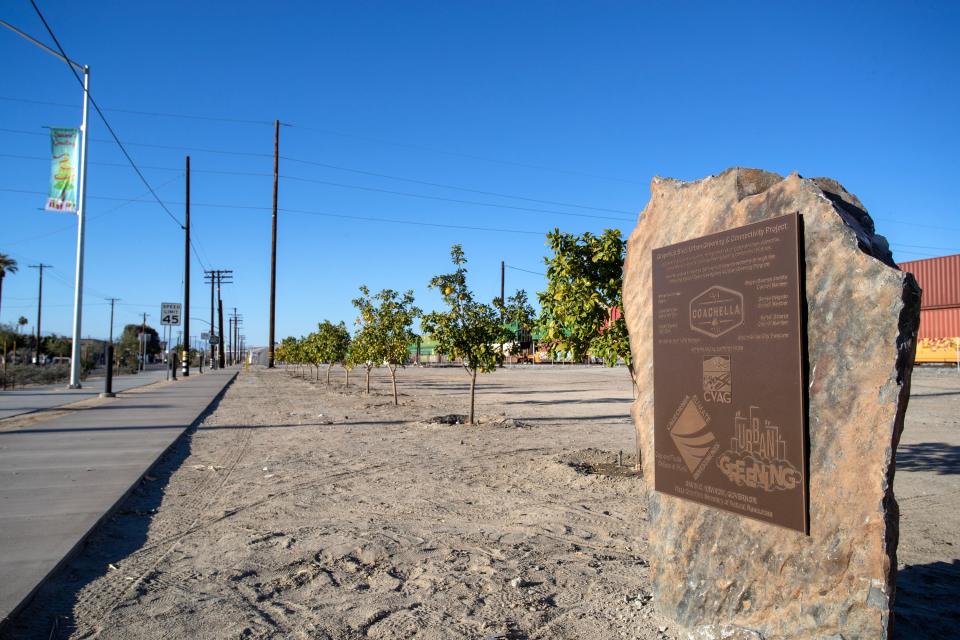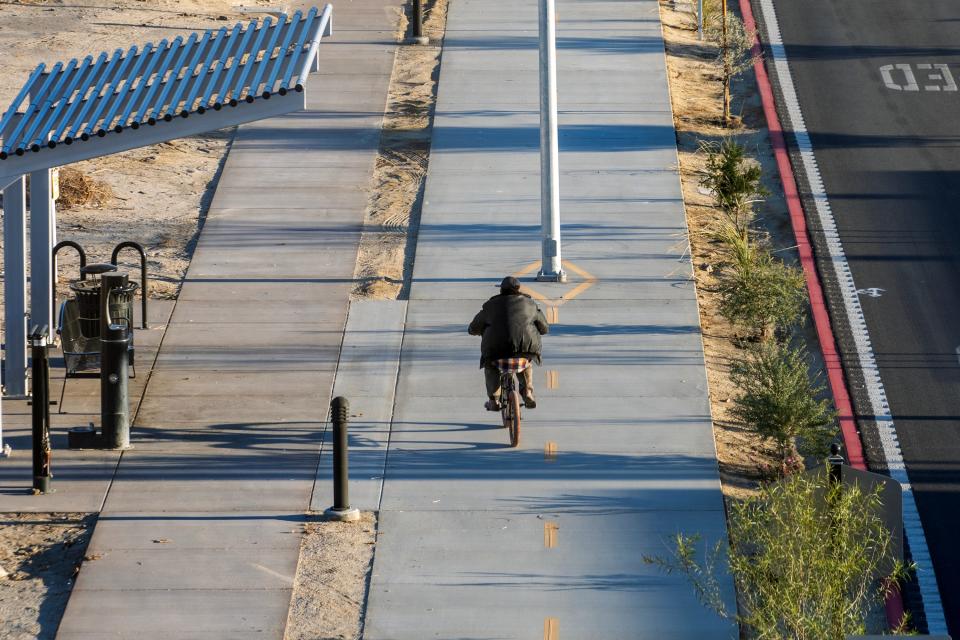Coachella wants to become a ‘blue zone’ city, where people live to be 100

Could Coachella become part of the top communities in the world where people are healthiest and live the longest?
Blue Zones, a company that promotes healthy living environments, hopes to address that question with the recent launch of an in-depth study that will determine how to make Coachella a healthier place to live.
Part of the Blue Zones Project, the feasibility study is being conducted in partnership with Riverside University Health System's public health department. By participating in the project, Coachella could join over 48 other communities across the globe in their attempt to become a "blue zone" — or places in which people live to be close to 100.
Currently, only Ikaria, Greece; Okinawa, Japan; Nicoya, Costa Rica; Sardinia, Italy; and Loma Linda, California, are cities considered blue zones by the company.
According to Dr. Shunling Tsang, deputy public health officer at Riverside University Health, Coachella was identified as a "good candidate" to become a blue zone because of the work it has already been doing to provide access to "healthy choices" for its residents.
"We saw that they had a lot of initiatives already that were aligned with some of the work that we're trying to do," Tsang said. "Our goal is to really partner with the city of Coachella to see how we could do that pulse assessment to understand their readiness to engage in moving towards that healthy transformation."
She emphasized Coachella's "heavy" investment in its downtown, including facilitating physical activity by incorporating walk and bike paths, as part of those healthy initiatives.

In October, the city completed its Urban Greening and Connectivity Project, which saw 288 trees and plants placed between Leoco Lane and Ninth Street, to help moderate temperatures and solar radiation for pedestrians and bicyclists along the Grapefruit Boulevard corridor.
The route also makes it easy to reach key parts of the city, including a transportation center, parks, the post office, library, senior center, restaurants and more.
The greening and connectivity project cost about $5.3 million, having received the bulk of its funding from the California Natural Resources Agency, along with $1.6 million from Coachella Valley Association of Governments and $535,667 from the city.
While constructing the project, Coachella also started working to rehabilitate buildings and empty lots, step up code enforcement and improve security to make downtown roads safer and more walkable.
"We hope to keep that connection going because we want to connect that to the CV Link and that new (Arts and) Music Line," said City Manager Gabriel Martin, referencing two other paths for walking and biking currently under development in the Coachella Valley.

Blue Zones is also conducting feasibility studies in other Riverside County locations — Riverside, Banning and the unincorporated areas of Mead Valley and French Valley — while Coachella is the second city in the Coachella Valley to work with the company, after Palm Springs in 2021.
Not just for seniors
Valley cities vary in demographics: Coachella is on the young side with only 10% of its population of about 42,000 over the age of 65, while 35% of Palm Springs' population of about 45,000 are seniors, according to the most recent U.S. Census. But Tsang said the communities Blue Zones works with are all viable to become "blue zones."
"A lot of times, people may think Blue Zones is really focused on our senior citizens ... Our view of (creating) the blue zones is really, how can we help? How can we look at extending life and quality of life for everyone that lives in that community? How do we improve well-being for everyone so that they can live the healthiest and most fulfilling life they can? And so, it really isn't targeted to the older population; we're really looking to target the entire population," Tsang said.
Martin, who is working closely with Riverside University Health and Blue Zones on the study, said he could anticipate areas that Coachella will need to improve to add to the quality of life.
"Being an underserved, disadvantaged community with limited resources, we sometimes don't have means to get good, nutritious, organic foods, due to the cost of those," he said. He added that access to health care is also a concern in the city.
Because those factors are part of the focus of the Blue Zones Project, Martin said he believes the partnership will help provide solutions.
Scientists identified nine characteristics that contribute to longer lives, which the existing five blue zones share:
Movement is more natural;
Residents have routines to de-stress;
They don't eat as much meat;
They stop eating when they’re 80% full;
They have one to two glasses of wine a day;
They know their purpose;
They belong to faith-based communities;
They keep family close; and
They find social circles that support healthy behaviors.
As the study is underway in Coachella, next steps include outreach and community engagement, educational forums, and focus groups, Martin said.
He said the results of that study will determine a schedule for carrying out Blue Zones' recommendations.
"We have to wait to see the outcome and what they recommend. And from there, we pick and choose what we're going to do, because it has a lot to do with policy ... and with funding," he said.

Eliana Perez covers the eastern Coachella Valley. Reach her at eliana.perez@desertsun.com or on Twitter @ElianaPress.
This article originally appeared on Palm Springs Desert Sun: City of Coachella seeks to be ‘blue zone’ where people live to 100

